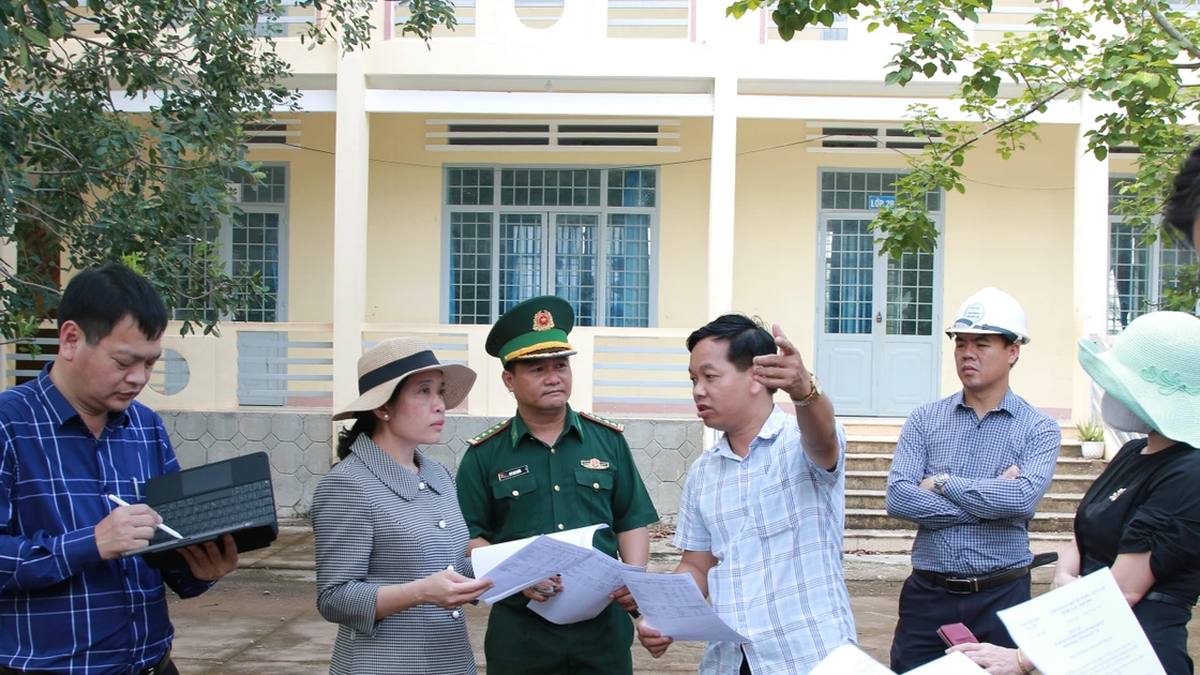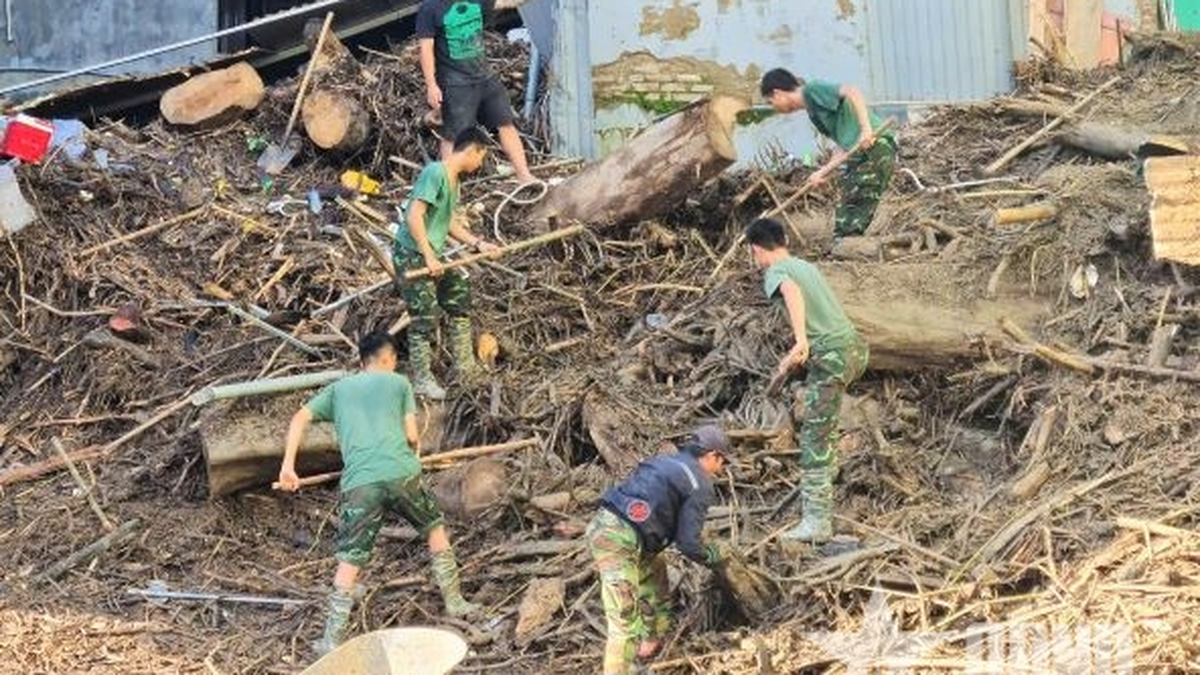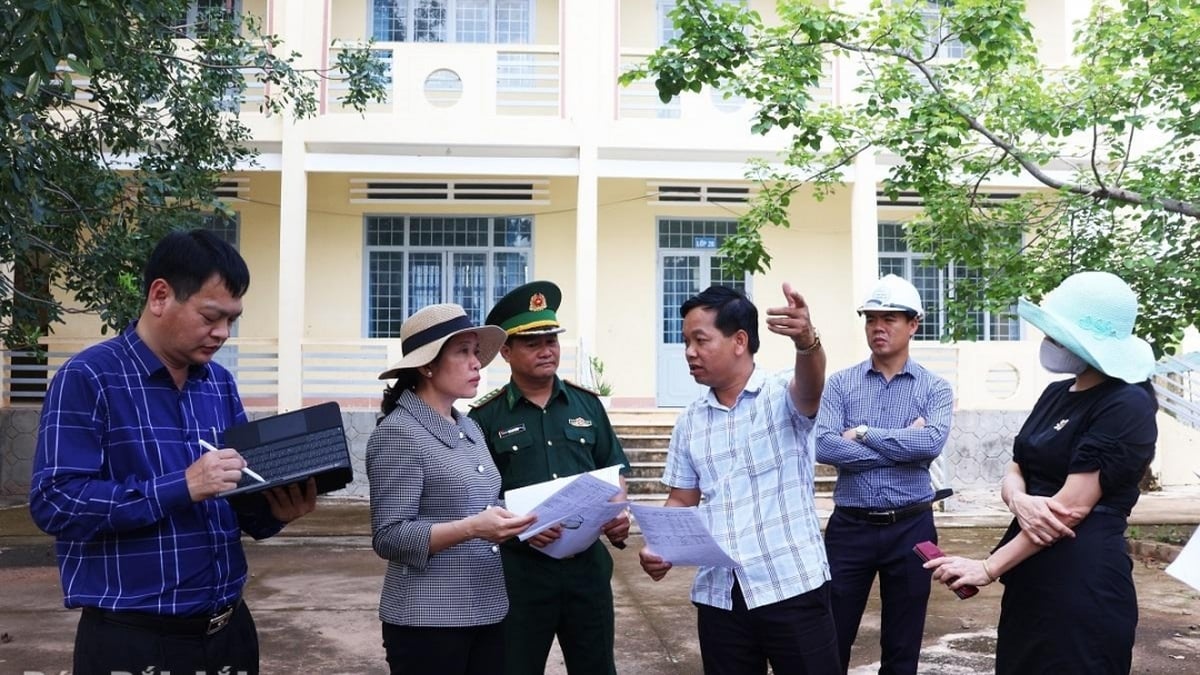Accordingly, on May 16, the Department of Emergency - Intensive Care - Anti-Poison, Bao Yen District General Hospital received a female patient (19 years old) in anaphylactic shock after being stung by a wasp. The patient was diagnosed with critical condition, cyanosis, respiratory failure, severe difficulty breathing, unmeasurable blood pressure, and allergic rash all over the body.
Doctor Vu Thi Ngoc Ninh examines a patient with a bee sting.
Doctor Vu Thi Ngoc Ninh, Hanoi Medical University Hospital, directly provided emergency treatment, immediately injected Adrenaline into the muscle, provided respiratory support, administered fluids and anti-allergy drugs according to the Ministry of Health 's anaphylactic shock protocol. After that, the patient overcame the critical condition.
Master, resident physician Vu Thi Ngoc Ninh is a doctor specializing in Emergency Resuscitation - Anti-Poisoning, Hanoi Medical University Hospital. The doctor examines, treats patients directly and provides professional support to medical staff at Bao Yen District General Hospital for 2 months, from May 13, 2025.
The patient's condition has stabilized.
Currently, the patient's condition is stable, no more rash, difficulty breathing, low blood pressure; clinically stable, improved; expected to be discharged in the next 1-2 days.
According to medical experts, when stung by hornets, hornets or other dangerous insects, if not given timely emergency care, some victims are at risk of death within the first 30 minutes. The risk of death depends not only on the amount of venom but also on the constitution and reaction of each person's body. This means that just 1 bee or 1 poisonous insect can kill a person. Therefore, people should never be subjective when stung by bees or bitten by insects or snakes...
How to treat a bee sting: Remove the victim from the area where the bee stung; keep the victim still, avoid moving too much to limit the spread of venom in the body. Bees often leave needles and venom sacs at the sting site. If the stinger protrudes to the skin surface, use tweezers to gently remove the needle. Avoid using your hands to pick or rub or press on the sting because the needle stuck to the skin has a venom sac attached that will continue to inject poison into the body. Wash the sting with soap or clean water, warm water, antiseptic solution. Apply a cold towel or ice pack to the sting area to reduce swelling, relieve pain... Let the victim drink plenty of water to eliminate toxins.
When stung by a bee, first aid should be given quickly and the victim's symptoms monitored. If there are severe signs (difficulty breathing, rapid heartbeat, hives, etc.), the victim should be taken to the hospital immediately. In particular, the more bee stings the victim has, the sooner he or she should be taken to the hospital. Absolutely do not use folk methods (such as lime, bee guts, etc.) or use drugs not prescribed by a doctor to treat the victim.
Source: https://baolaocai.vn/cap-cuu-thanh-cong-benh-nhan-soc-phan-ve-do-3-do-bi-ong-bap-cay-dot-post402061.html




































































































Comment (0)